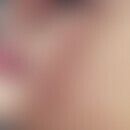Synonym(s)
HistoryThis section has been translated automatically.
DefinitionThis section has been translated automatically.
Rare, superficial, diffuse but also segmentally distributed vascular neoplasms. Occasional associations with systemic diseases have been described (Sjögren's syndrome, primary biliary cirrhosis, paraproteinemia) without a pathogenetic explanation for this association.
You might also be interested in
Occurrence/EpidemiologyThis section has been translated automatically.
AS is a rare disease, estimated at less than 1 in 1,000,000 people. Although both sexes are affected at any age, 90% of cases occur in girls under the age of 16. The disease is usually sporadic, but familial occurrence has also been reported (Omim 106050).
EtiopathogenesisThis section has been translated automatically.
The pathogenesis of angioma serpiginosum is unknown. The association of an Xp11.23 deletion of the PORCN gene is being discussed. The association of angioma serpiginosum-like skin changes and Goltz syndrome is noteworthy (Fernandez-Flores A et al. 2022; Tewari A et al. 2019). The combination with oesophageal papillomatosis has also been reported (Blinkenberg EO et al. 2007) and the extent to which increased oestrogen levels play a role in the development of angioma serpiginosum remains to be seen. Rapid progression has been reported during pregnancy (Das D et al. 2016).
ManifestationThis section has been translated automatically.
Mostly occurring in childhood and adolescence (80% of patients are affected before the age of 18). Rarely present at birth. Angioma serpiginosum has been observed less frequently in newborns.
LocalizationThis section has been translated automatically.
The lower extremities and buttocks are most commonly affected; atypical areas such as the chest and soles of the feet and mucous membranes can also be affected.
ClinicThis section has been translated automatically.
Disseminated, 1-2 mm large, bright red to purple spots, some of which cannot be pushed away. Occasionally also telangiectasias. Grouped arrangement results in serpiginous, gyrated or linear patterns. The mucous membranes close to the skin remain free. The arrangement and extent of the lesions can result in a serpiginous pattern. Rarely, the eyes and nervous system may be affected (Gautier-Smith PC et al. 1971). Manifestation along the Blaschko lines has been described but is rather rare.
Other methods of examination This section has been translated automatically.
Pressure causes incomplete blanching. However, the lesions are not hemorrhagic.
Dermatoscopy: The spots represent dilated, non-inflamed capillaries in the dermal papillae. These can be visualized very well with dermoscopy. Dermoscopy shows numerous small, relatively well demarcated, round to oval red lagoons (Ilknur T et al. 2006), which are due to irregularly dilated capillaries in the papillary or superficial reticular dermis. The dermoscopic findings of angioma serpiginosum have also been described as a "school of goldfish in a pond". In particular, dermoscopy can help to differentiate angioma serpiginosum from purpura diseases.
HistologyThis section has been translated automatically.
Convolute dilated capillaries with or without thickening of the vessel wall in the papillary stratum, sometimes also capillary proliferation and erythrocyte extravasations. No inflammatory infiltrates.
Differential diagnosisThis section has been translated automatically.
Angioma serpiginosum has characteristic clinical features that help to distinguish this disease from similar dermatological anomalies. As a rule, patients are asymptomatic and show no bleeding, pain or inflammation.
The following diseases should be considered in the differential diagnosis:
TherapyThis section has been translated automatically.
Cosmetic coverage. Studies have shown that various lasers are effective in the treatment of angioma serpiginosum, including argon lasers, pulsed dye lasers (PDL) and intense pulsed light (IPL). PDL is the most commonly used laser for angioma serpiginosum and usually requires multiple sessions. Case reports of patients treated with the potassium titanyl phosphate (KTP) laser with a shorter wavelength of 532 nm have also shown good results. The advantages of shorter wavelength lasers are reduced depth of penetration, as this is not required for most angioma serpiginosum, reduced energy output (i.e. fluence) and reduced damage to melanocytes, which may reduce the risk of hypopigmentation (Anjaneyan G et al. 2024).
Progression/forecastThis section has been translated automatically.
Healing without atrophy is possible, usually after years.
The disease often develops progressively and begins with small, asymptomatic lesions that enlarge and merge at the edges, resolving in the center. After an initial growth phase in childhood, the lesions usually stop growing during puberty and remain stable in adulthood. Conditions associated with AS include vulval angiokeratomas. Retinal vein occlusions have also been observed.
Case report(s)This section has been translated automatically.
Kanji A et al. (2023): A 15-year-old female patient presented with multiple asymptomatic lesions on the first two fingers of the right hand that first appeared at the age of 2 years. On examination, there were erythematous circumscribed patches on the right hand (dorsal and volar) corresponding to a capillary malformation in the dermis with normal blood flow on ultrasound. As cosmetics were not an issue for the patient, treatment was not indicated.
LiteratureThis section has been translated automatically.
- Al Hawsawi K et al (2003) Linear angioma serpiginosum. Pediatr Dermatol 20: 167-168
- Anjaneyan G et al (2024) Angioma serpiginosum. 2023 Nov 5. In: StatPearls. Treasure Island (FL): StatPearls Publishing; PMID: 29083693
- Chavaz P, Laugier P (1981) Angioma serpiginosum Hutchinson: ultrastructural study (author's transl). Ann Dermatol Venereol 108: 429-43
- Das D et al (2016) Blaschko-linear angioma serpiginosum. Indian J Dermatol Venereol Leprol 82:335-337.
- Gautier-Smith PC et al. (1971) Ocular and nervous system involvement in angioma serpiginosum. Br J Ophthalmol 55:433-43.
- Gerbig A et al. (1995) Angioma serpiginosum, a skin lesion along the Blaschko lines. Dermatology 46: 847-849
- Ilknur T et al. (2006) Angioma serpiginosum: Dermoscopy for diagnosis, pulsed dye laser for treatment. J Dermatol 33:252-255.
- Kanji A et al (2023) Angioma serpiginosum. Br J Hosp Med (Lond) 84:1.
- Katta R et al. (2003) Angioma serpiginosum with extensive cutaneous involvement. J Am Acad Dermatol 42: 384-385
- Namazi MR et al (2003) Angioma serpiginosum. Dermatol Online J 9: 19
- Radcliffe-Crocker H (1893) Diseases of the skin: their description, pathology, diagnosis, and treatment, with special reference to the skin eruptions of children. P. Blakiston, son & Co, Philadelphia, p. 646
- Sammarco E et al. (2022) Angioma serpiginosum: Two cases in children and review of literature. Dermatol Reports 14:9260.
- Sandhu K, Gupta S (2005) Angioma serpiginosum: report of two unusual cases. J Eur Acad Dermatol Venereol 19: 127-128
Incoming links (9)
Angioma serpiginosum familial incidence; Cherry angioma; Cherry angioma; Goltz syndrome; Naevus; PORCN gene; Teleangiectasia; Teleangiectasia; Unilateral naevoid telangiectasia syndrome;Outgoing links (6)
Blaschko lines; Fabry's disease; Hereditary haemorrhagic telangiectasia ; PORCN gene; Purpura pigmentosa progressive; Varice reticular;Disclaimer
Please ask your physician for a reliable diagnosis. This website is only meant as a reference.












